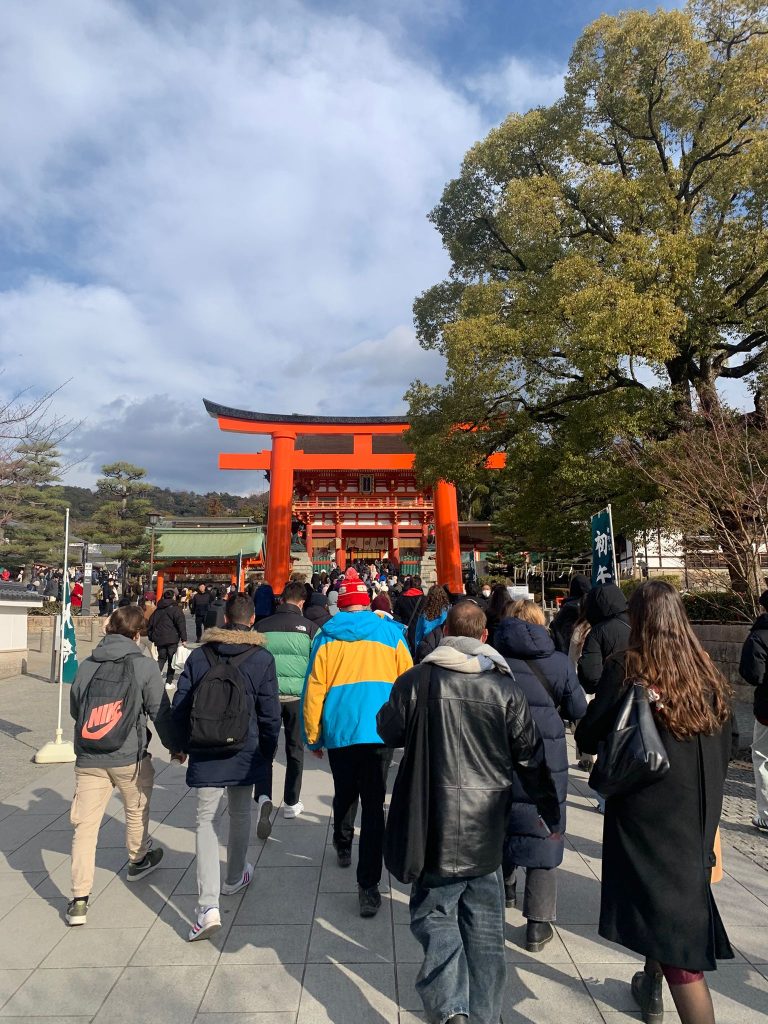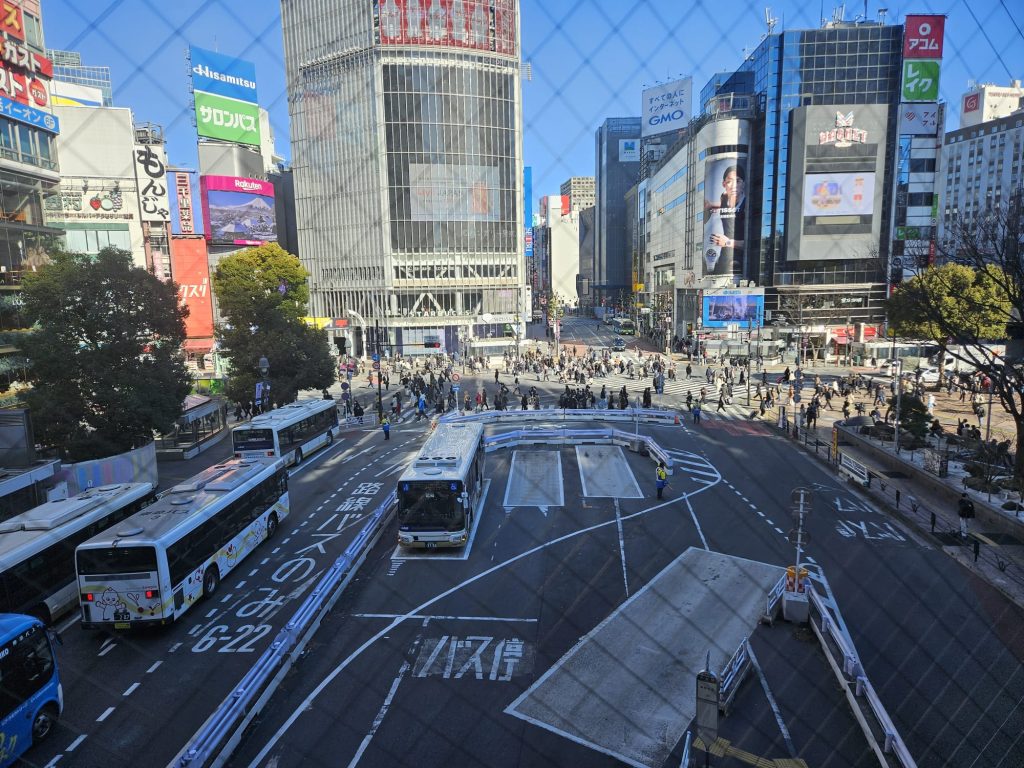In the morning we had the unforgettable experience of visiting a 100-year-old traditional tea house in Kyoto We immersed ourselves in the art of the Japanese tea ceremony. Guided by a gracious tea master in an elegant kimono, we learned the intricate rituals behind this centuries-old tradition—from the precise movements to the deep symbolism of every gesture. Sitting on tatami mats, savoring matcha in a serene setting, I truly appreciated the harmony, respect, and mindfulness that define this beautiful practice.

After the tea ceremony, we took a short stroll to Nishiki Tenmangū Shrine, a beautiful shrine dedicated to Sugawara no Michizane, the Shinto god of knowledge and learning. Students from all over Japan visit this shrine to pray for academic success, and you’ll often see wooden ema plaques covered in wishes for good grades. A unique feature of this shrine is its magical well, where visitors can see their fortune reflected in the water!
Next, we explored Nishiki Market, a vibrant market dating back over 400 years, known as “Kyoto’s Kitchen.” This historic shopping street is famous for its traditional Japanese snacks, fresh seafood, and unique Kyoto delicacies like yuba (tofu skin), tsukemono (Japanese pickles), and yatsuhashi (cinnamon rice crackers). Walking through the market, we were in awe of shops that have been operating for centuries, some still run by the same family lineages for generations.
Our last company visit of the day was at Chuhai Labs, an indie video game developer known for its creative and experimental approach to game design. It was fascinating to see how Japanese gaming culture blends innovation with tradition and how indie developers are making their mark in a highly competitive industry.
For lunch, we headed back to Nishiki Market, where the sheer variety of food stalls meant that everyone found something exciting to try. If you’re ever in Kyoto, we highly recommend tasting the fresh uni (sea urchin) for a true delicacy or enjoying a warm matcha latte for a comforting pick-me-up.
After lunch, we visited the iconic Fushimi Inari Taisha Shrine, one of Kyoto’s most famous landmarks. This shrine is dedicated to Inari, the Shinto god of rice, prosperity, and business success. The striking vermilion torii gates that form the scenic paths up the mountain are actually donations from businesses and individuals seeking Inari’s blessings for wealth and success. The fox statues scattered throughout the shrine represent Inari’s messengers, and many of them hold a key in their mouths, symbolizing the key to rice granaries. Ending our day at Fushimi Inari Taisha was truly special—walking through the endless tunnel of torii gates as the sun began to set gave us a profound sense of history, tradition, and spiritual connection to Kyoto. It was the perfect way to conclude a day filled with culture, learning, and exploration.
